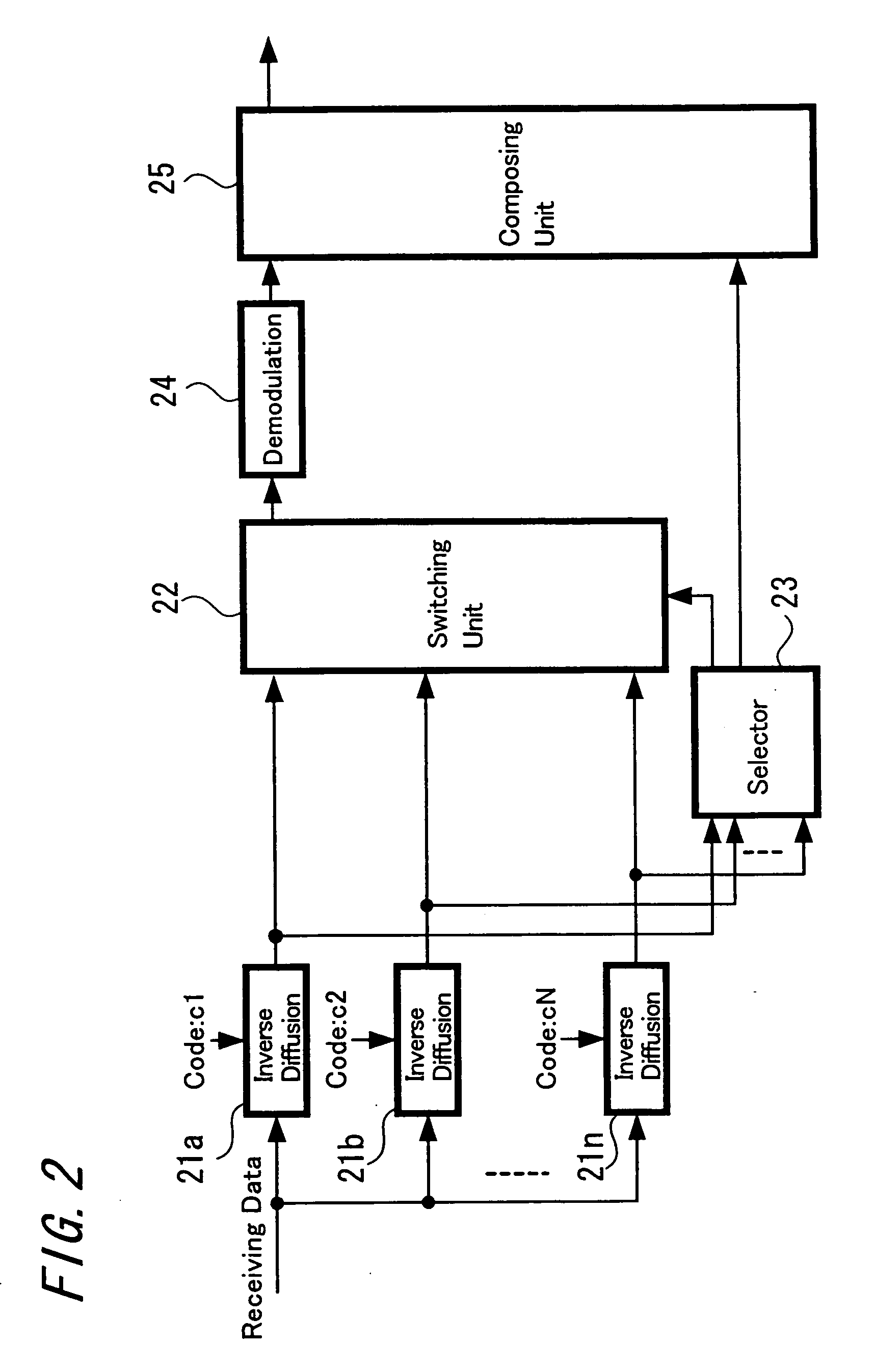Data transmission method, data reception method, data transport method, data transmission apparatus, data reception apparatus and data transport system as well as communication terminal
a data transmission and data technology, applied in multi-frequency code systems, multiplex communication, orthogonal multiplexes, etc., can solve the problems of large amount of transmitting power as a whole, noise characteristics become deteriorated, and the transmission rate is raised, the transmission rate is reduced, and the transmission efficiency is improved.
- Summary
- Abstract
- Description
- Claims
- Application Information
AI Technical Summary
Benefits of technology
Problems solved by technology
Method used
Image
Examples
Embodiment Construction
[0031] Hereinafter, embodiments of the present invention are explained referring to FIGS. 1 through 10.
[0032] First, a principle of transmission according to an embodiment of the present invention is explained referring to FIGS. 1 and 2. FIG. 1 is a diagram showing the principle and configuration on a transmitting side, and FIG. 2 is a diagram showing the principle and configuration on a receiving side.
[0033] An explanation is made to the principle and configuration on the transmitting side shown in FIG. 1; transmitting data is supplied to a separator 11. The supplied transmitting data is separated into two systems in the separator 11. For example, in case of the transmitting data in which one unit (one symbol) includes four bits, it is separated into two bits each, and one two-bit data is supplied to a switching unit 12. Further, the other two-bit data is supplied to the switching units 12 and 15 as switching control information.
[0034] The one two-bit data supplied to the switch...
PUM
 Login to View More
Login to View More Abstract
Description
Claims
Application Information
 Login to View More
Login to View More - R&D
- Intellectual Property
- Life Sciences
- Materials
- Tech Scout
- Unparalleled Data Quality
- Higher Quality Content
- 60% Fewer Hallucinations
Browse by: Latest US Patents, China's latest patents, Technical Efficacy Thesaurus, Application Domain, Technology Topic, Popular Technical Reports.
© 2025 PatSnap. All rights reserved.Legal|Privacy policy|Modern Slavery Act Transparency Statement|Sitemap|About US| Contact US: help@patsnap.com



